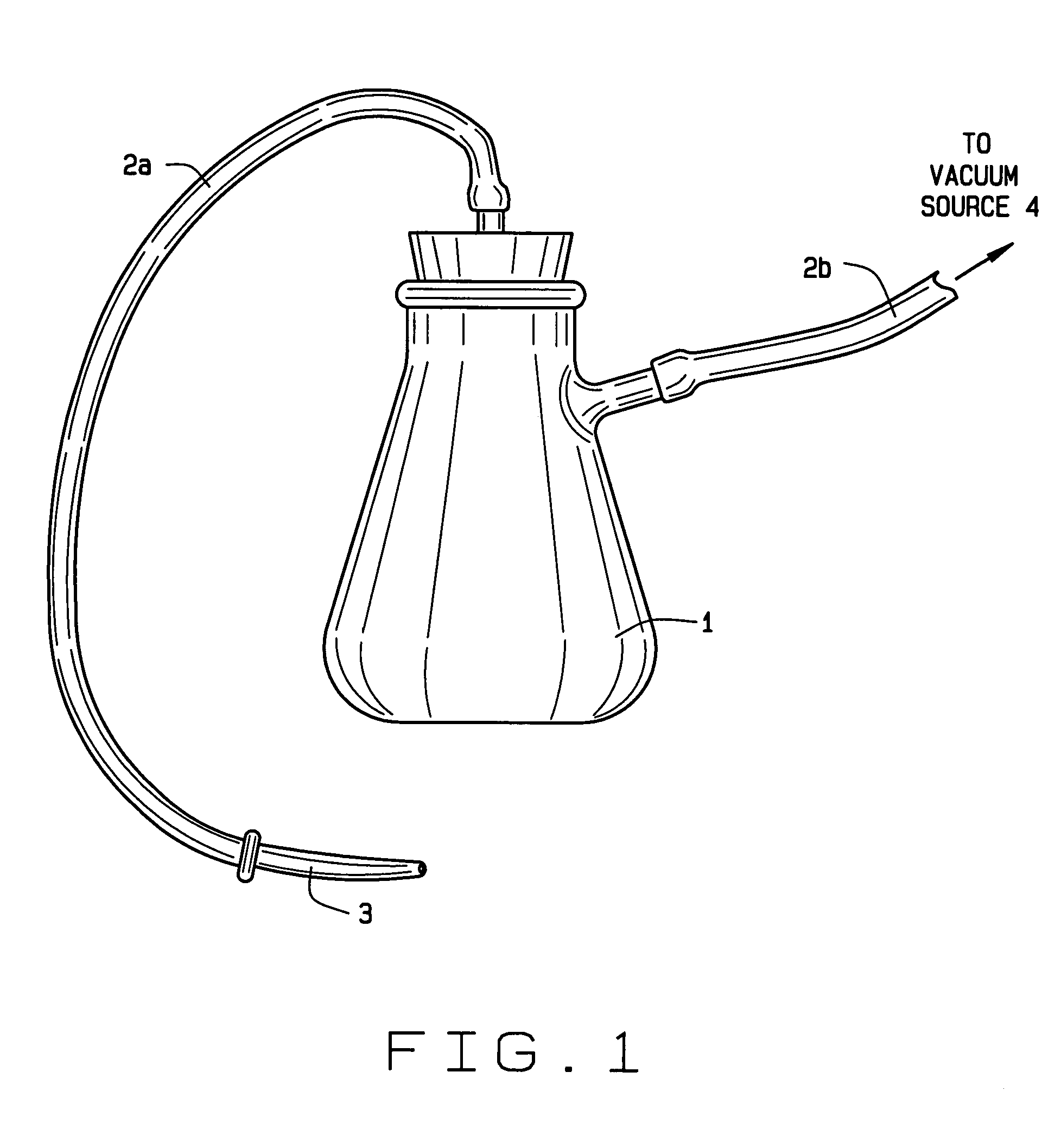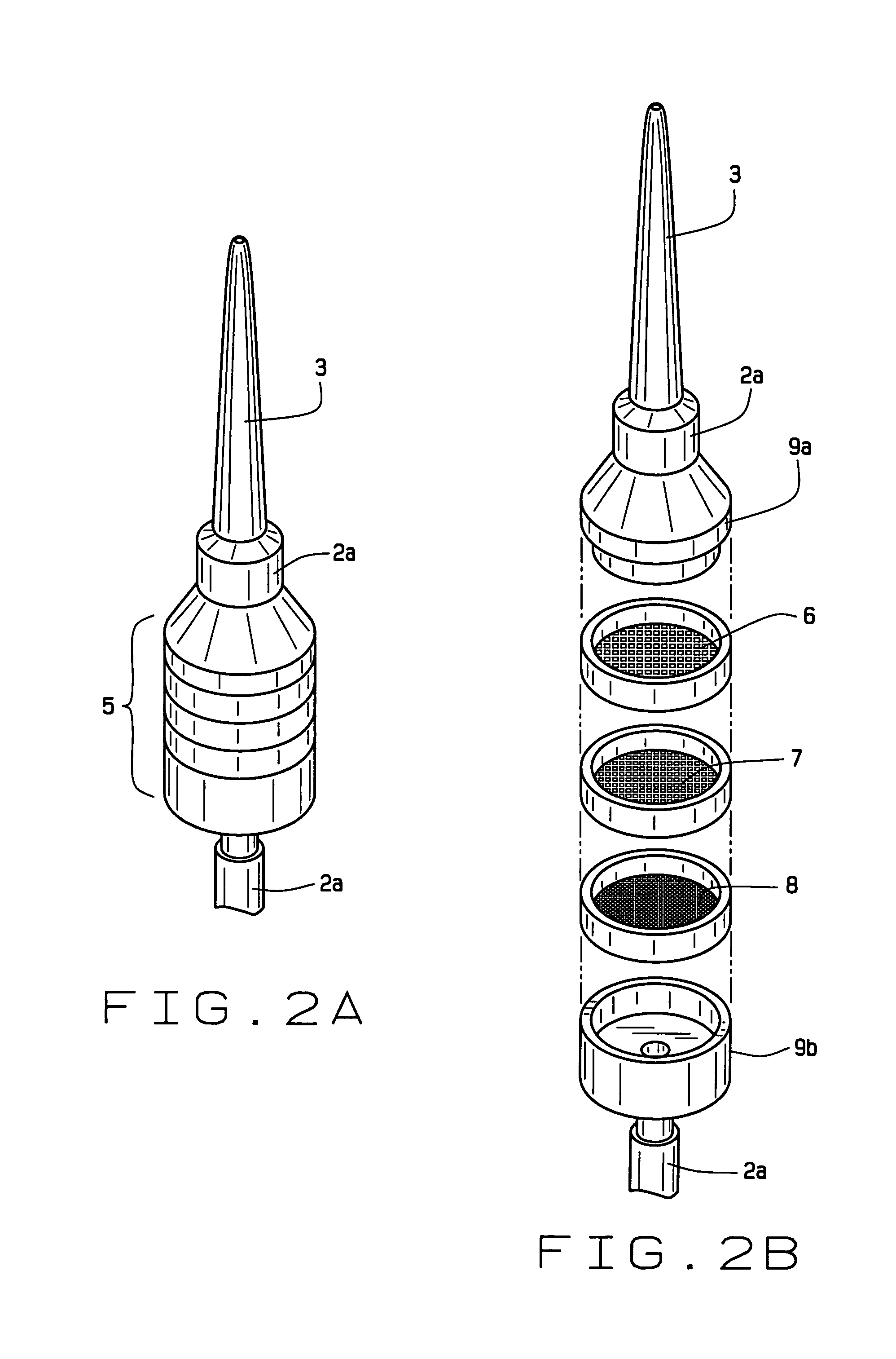Method for excision of plant embryos for transformation
a technology for plant embryos and excisions, applied in the field of plant embryo excisions for transformation, can solve the problems of time-consuming and laborious regeneration and transformation, manual excision of embryogenic tissues is not only laborious, and is fraught with ergonomic problems
- Summary
- Abstract
- Description
- Claims
- Application Information
AI Technical Summary
Benefits of technology
Problems solved by technology
Method used
Image
Examples
example 1
[0040]This example illustrates the use of vacuum excision to isolate maize immature embryos and the production of callus tissue from the isolated embryos.
[0041]Two Zea mays lines, a male line and a female line, were prepared for vacuum excision. Ears were collected 10–12 days post pollination and were sterilized by immersion in 80% ethanol. Following a short air-drying, each ear was placed on sterilized aluminum foil and gently rolled on a flat surface. A scalpel was used to slice off the crowns (tops) of the kernels.
[0042]Using a sterile vacuum aspirator (see FIG. 1), the immature embryos (IEs) and some surrounding endosperm tissue was excised using a vacuum of about 610 mm Hg by introducing the pipette tip into the apical end of the kernel with a horizontal position of the wide bore pipette tip. Occasionally, sterile medium (e.g., 211 liquid media) was also drawn into the aspirator to propel any bits of tissue in the tubing into the collecting receptacle.
Isolation of Partial and I...
example 2
[0053]This example describes the production of a transgenic plant prepared by transformation of immature embryos isolated using vacuum excision.
Transformation of Intact Immature Embryos
[0054]Intact immature embryos were vacuum excised (˜610 mm Hg) from a female maize line ears 10–12 days post pollination as described in Example 1 and used for Agrobacterium mediated transformation.
[0055]Agrobacterium was transformed to contain a vector comprising a green fluorescent protein (GFP) marker gene and a CP4 marker gene allowing for herbicide resistance. Excess liquid was removed from the vacuum isolated intact embryos. The embryos were allowed to incubate with the Agrobacterium for about 15–20 minutes at room temperature. The intact embryos were removed from the Agrobacterium solution, placed onto solid 600 media and allowed to incubate overnight. Following this, the vacuum excised tissues were placed onto solid 850 media for about 3 weeks, followed by about 1 week on solid 192 media, foll...
example 3
[0058]This example describes the production of a transgenic plant prepared by transformation of callus material prepared from immature embryos isolated using vacuum excision. Two Zea mays lines, a representative male and female line, were prepared for vacuum excision as described in Example 1.
Intact Immature Embryos
[0059]Callus isolated from intact immature embryos is useful for transformation and regeneration of mature transgenic plants. Intact immature embryos were vacuum excised into the collecting receptacle, and the liquid and tissue in the collection vessel was poured out into a thin layer onto solid media. In other experiments, the sieving unit was used to collect the intact IEs. Following either excision method, intact immature embryos were selected for callus production. The isolated IEs from the male maize line were placed onto solid 211 media and incubated at approximately 28° C. The isolated IEs from the female maize line were placed onto solid 851 media and incubated at...
PUM
 Login to View More
Login to View More Abstract
Description
Claims
Application Information
 Login to View More
Login to View More - R&D
- Intellectual Property
- Life Sciences
- Materials
- Tech Scout
- Unparalleled Data Quality
- Higher Quality Content
- 60% Fewer Hallucinations
Browse by: Latest US Patents, China's latest patents, Technical Efficacy Thesaurus, Application Domain, Technology Topic, Popular Technical Reports.
© 2025 PatSnap. All rights reserved.Legal|Privacy policy|Modern Slavery Act Transparency Statement|Sitemap|About US| Contact US: help@patsnap.com


